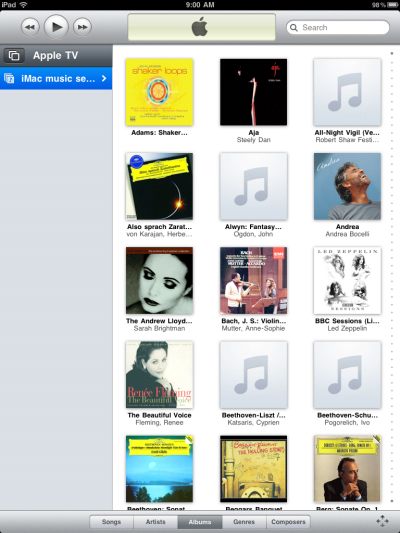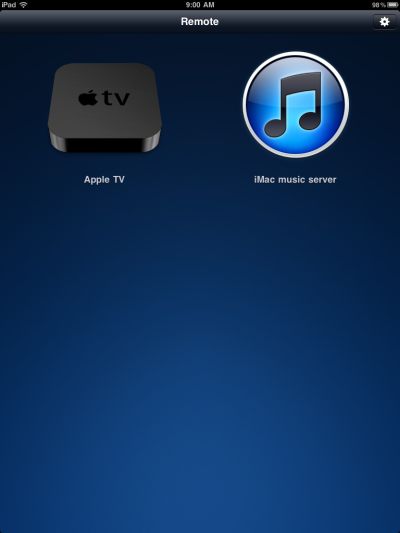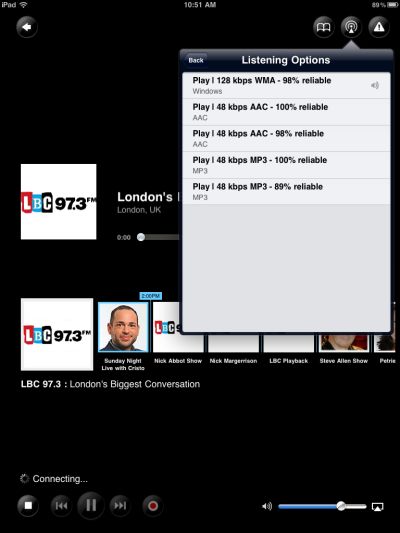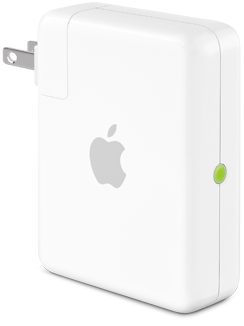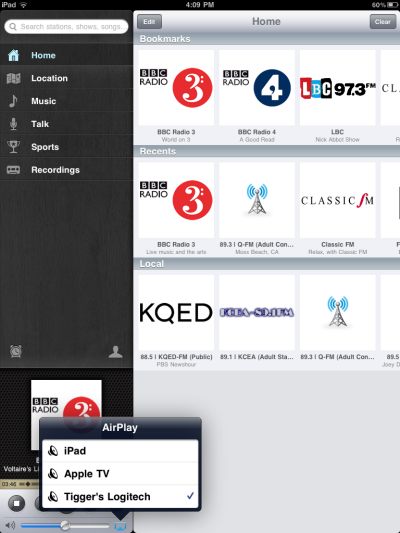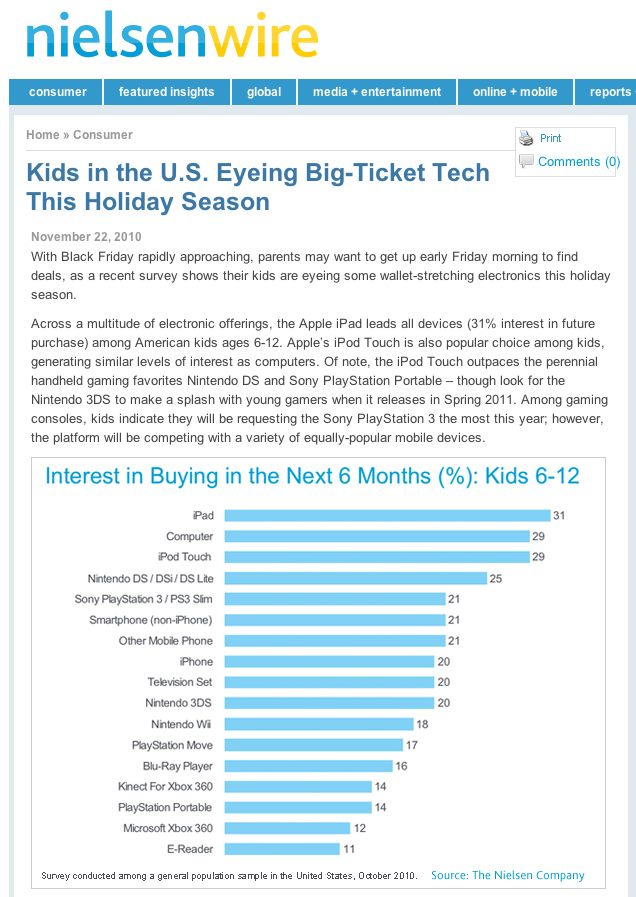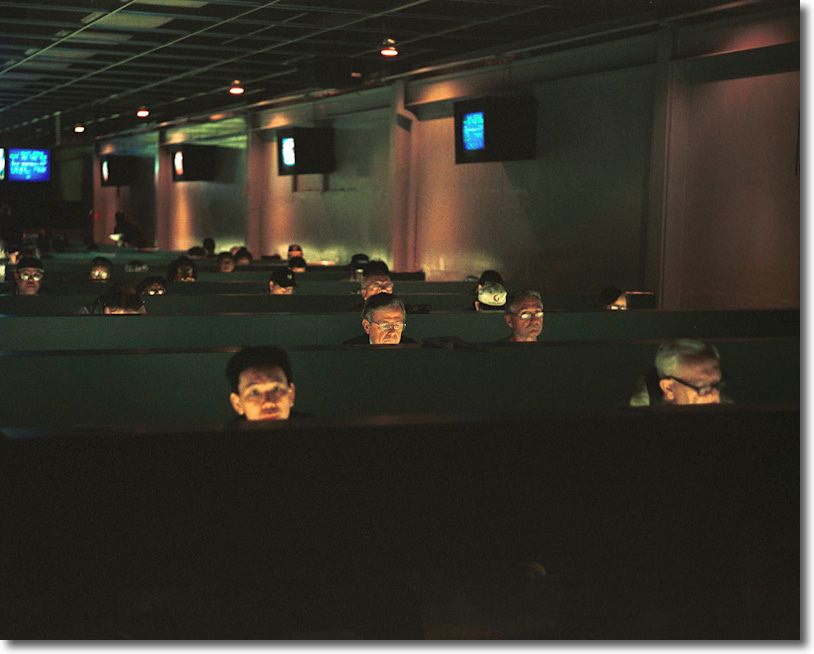A dream combination.
Having just installed iOS 4.2.1 on my iPad I can scarce contain my excitement as to how it collaborates with a big screen TV and an iPad for a photographer.
It’s still a work in progress but this combination begins to finally show a meaningful, realistic step in the direction of coordinating disparate devices and making them work together painlessly.
Let me jump to the bottom line. I’m reviewing a photo album in my iPad on the AppleTV to the accompaniment of classical music, relayed by Pandora Radio. The source pictures and music are coming from my iPad. I flick the pictures on the iPad and the 42″ TV faithfully reproduces them. The colors are true also as I have profiled the TV with my EyeOne colorimeter.
For the amateur this is magic; for the pro, showing his pictures to the magazine editor, it’s essential. All that’s needed in addition to the iPad is a TV and the $99 AppleTV device, which I have reviewed at length here a few days ago.
So while much of what we are hearing about the latest iOS for the iPad is about multitasking, the real magic sauce for photographers is in AirPlay, the technology which makes what I describe above possible.
Setup is child’s play; after installing the new OS on the iPad, all you do is go to the Photos app on the iPad, select an album, turn on the TV, touch the AirPlay button on the iPad and you are off. Music? Add it in background mode from your iPad and route it likewise to your TV. The TV, of course, has two things the iPad does not – a huge screen and decent speakers.
Snags?
The iPad still needs a decent touchscreen photo processing app so that you can make changes and see them on the big screen, rather than round-tripping to your desktop. You still cannot turn pictures on the iPad through ninety or one hundred and eighty degrees.
And, worst fo all, you cannot print from the iPad. Mr. Jobs, please. All that hype about the new iOS 4 and we learn that the only way the iPad can print natively is through one of the latest AirPrint-enabled printers? What a crock! You expect me to buy a new printer? Well, BS says I.
Click the picture below and you can download an $8 app to your desktop Mac, check off your Bonjour enabled printer, and the iPad will print to it (or to DropBox, etc.) just fine. It works fine with my Brother 2170W monochrome laser, and I have yet to try it with the HP DJ90 wide carriage color printer. What have you got to lose? The app comes with a 7 day free trial period.
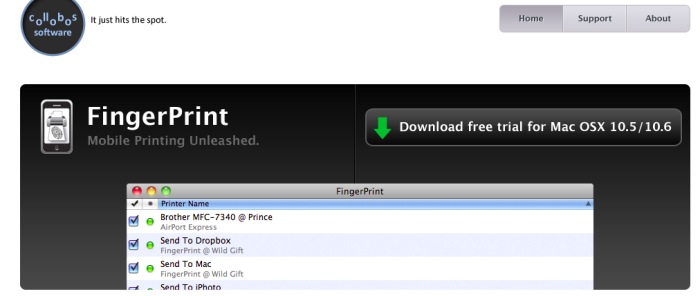
Click to see more.
Here’s FingerPrint being installed on my HackPro – note that I have checked off my Brother printer:
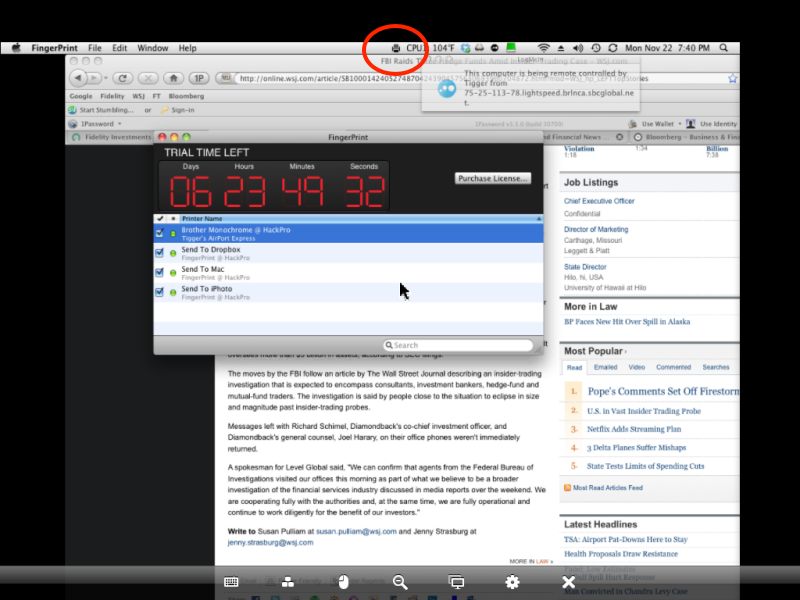
That’s a screen shot of the HackPro taken remotely using LogMeIn on the iPad to remotely access the HackPro – another piece of magic which I wrote about here. Note the FingerPrint icon in the menu bar (circled), and be sure to add FingerPrint to the login items on your desktop to make sure it’s automatically loaded after a reboot.
So now you can display your pictures on the big screen from a 24 oz portable device and print them to your device of choice. I’ll let your imagination do the rest.
Installing iOS 4 on the iPad:
If you have tons of data on your iPad the process of upgrading from iOS 3 to iOS4 could scarcely be worse. Mine took 9 hours. There’s a fault in the code and iOS4 will not load until the 9 hour backup (a mere 40gB of data in my case) is done through iTunes. Ridiculous. And please don’t tell me Apple is ignorant of this error. Look at the hits regarding this issue on their discussion board:

Only after I did the long backup to allow the installation of iOS4 did I learn of a free utility named BackOff which aborts the backing up of data and permits the iOS upgrade to proceed apace. Guess what I’ll be doing next time ….
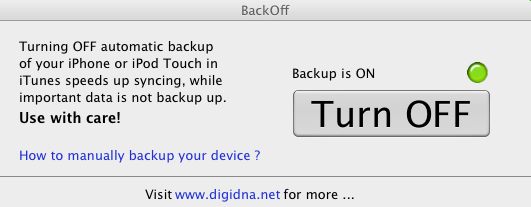
BackOff comes in first world (Mac) and third world (PC) versions
We are at the cusp of a revolution in the ease with which devices can be connected in the home or business.
You need and AppleTV to go with your iPad.
Disclosure: I own tons of AAPL stock and call options. Your buying an AppleTV is hardly going to make me rich.

